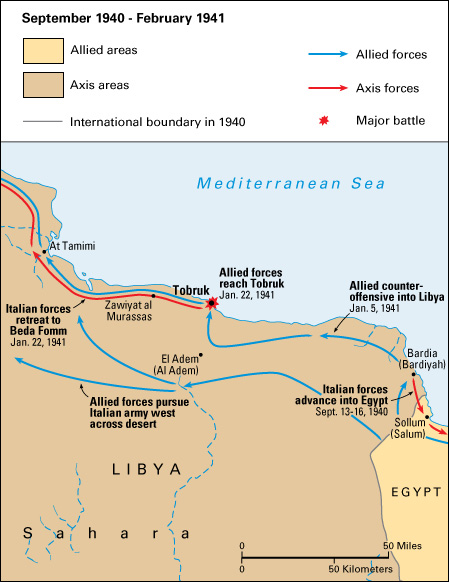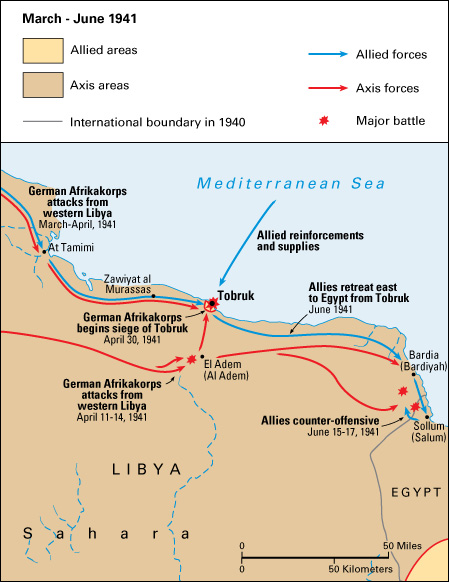Tobruk << toh BRUK >> (pop. 120,000) is a port city in northeastern Libya. It lies on the Mediterranean Sea about 70 miles (110 kilometers) from the Egyptian border. The city has a large natural harbor. The land around Tobruk features steep cliffs and vast deserts. Tobruk and the surrounding lands were the site of heavy fighting during World War II (1939-1945).
Beginning around 600 B.C., a number of peoples settled in the Tobruk area. These peoples included the Greeks, Romans, Arabs, and Ottomans. Italy invaded the Libyan coastal regions in 1911 and quickly took control of several port cities, including Tobruk.

During World War II, Tobruk was an important supply port for armies in northern Africa. A large airfield south of the city added to its military importance. Italy—at that time an ally of Nazi Germany—built a ring of fortifications to enhance Tobruk’s natural barriers. British Commonwealth troops broke the Italian line and took Tobruk in January 1941. Italian reinforcements soon arrived along with thousands of German troops. Overwhelmed, the British retreated to Egypt in April. About 30,000 Allied troops—mainly Australian—remained in Tobruk, isolated and under siege.

The Allied troops held out against steady attacks for months. The frustrated Germans labeled the defending troops the “rats of Tobruk.” In spite of frequent bombing attacks, Allied ships were able to reach Tobruk’s port with supplies and fresh troops. British, Czech, and Polish troops replaced many of the Australian units between mid-August and late October. The siege finally ended in December with the arrival of British forces from Egypt. In June 1942, renewed German attacks succeeded in taking Tobruk. British troops retook the city in November.
After the war, the Port of Tobruk was rebuilt and expanded. Oil pipelines connected the port to Libya’s rich interior oil fields. During the Libyan rebellion against the rule of Mu’ammar Muhammad al-Qadhāfī in 2011, Tobruk was one of the first cities to come under rebel control.
